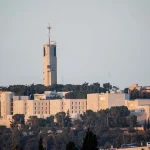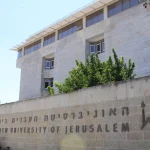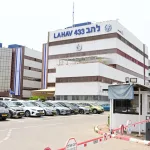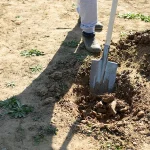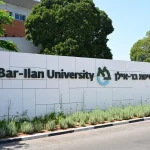🌟 Our Commitment to Diversity
At Israel.com, we believe that diverse perspectives strengthen our journalism and better serve our global audience. Our commitment to diversity extends across all aspects of our newsroom operations, from source selection and story coverage to staff recruitment and editorial decision-making.
This policy outlines our comprehensive approach to ensuring inclusive representation in our coverage of Israel and the Middle East, recognizing the rich tapestry of communities, voices, and viewpoints that make up this complex region.
Our Vision
"To reflect the full spectrum of human experience and perspective in our journalism, ensuring that all communities feel seen, heard, and fairly represented in our coverage."
🎯 Core Diversity Principles
Inclusive Representation
- Demographic Diversity: Actively seek sources and perspectives from different ethnic, religious, gender, age, and socioeconomic backgrounds
- Geographic Representation: Ensure coverage represents voices from urban and rural areas, different regions, and various community sizes
- Ideological Balance: Include diverse political and ideological perspectives while maintaining editorial objectivity
- Professional Diversity: Feature voices from various professions, educational backgrounds, and life experiences
- Accessibility: Ensure our content is accessible to readers with different abilities and technology access levels
Editorial Diversity Standards
- Source Quotas: Strive for at least 40% of quoted sources in articles to be from underrepresented groups
- Expert Networks: Maintain diverse databases of experts and commentators across all coverage areas
- Story Selection: Regular review of story selection to ensure diverse community representation
- Language Sensitivity: Use inclusive language that respects all communities and identities
👥 Newsroom Diversity and Inclusion
Staff Diversity Initiatives
- Inclusive Hiring: Proactive recruitment from diverse communities and educational institutions
- Mentorship Programs: Pairing junior staff from underrepresented groups with senior mentors
- Professional Development: Equal access to training, conferences, and career advancement opportunities
- Leadership Representation: Commitment to diversity in editorial leadership and management positions
- Internship Programs: Structured internship programs targeting students from diverse backgrounds
Inclusive Workplace Culture
- Safe Environment: Zero tolerance for discrimination, harassment, or bias in the workplace
- Cultural Competency: Regular training on cultural sensitivity and unconscious bias
- Religious Accommodation: Flexible scheduling for religious observances and cultural practices
- Family Support: Policies supporting work-life balance for all family structures
📰 Diverse Coverage Guidelines
Community Representation
- Jewish Communities: Represent the diversity within Jewish communities including Ashkenazi, Sephardic, Mizrahi, Ethiopian, Russian, and other backgrounds
- Arab Communities: Ensure representation of Palestinian citizens, Bedouins, Druze, and other Arab communities in Israel
- Religious Minorities: Include Christian, Muslim, Baháʼí, and other religious community perspectives
- LGBTQ+ Voices: Regular inclusion of LGBTQ+ perspectives and coverage of relevant issues
- Disability Community: Amplify voices from the disability community and ensure accessibility in coverage
- Immigrant Communities: Feature recent immigrants and their unique perspectives on Israeli society
Geographic and Social Diversity
- Urban vs. Rural: Balance coverage between major cities and smaller towns/rural areas
- Socioeconomic Diversity: Include perspectives from different economic backgrounds and social classes
- Generational Voices: Ensure representation across age groups from youth to elderly
- Professional Diversity: Feature voices from various professions beyond politics and academia
⚖️ Bias Prevention and Training
Unconscious Bias Training
- Regular Workshops: Mandatory quarterly training sessions on unconscious bias recognition
- Cultural Sensitivity: Training on cultural nuances and sensitivities of different communities
- Language Guidelines: Regular updates on inclusive language and terminology preferences
- Historical Context: Training on historical context affecting different communities in the region
Editorial Review Process
- Diversity Checks: Editorial review includes assessment of source diversity and representation
- Community Feedback: Regular engagement with community leaders for feedback on coverage
- Reader Input: Systems for readers to provide feedback on representation and bias concerns
- External Review: Annual external review of diversity practices by independent experts
📊 Measurement and Accountability
Diversity Metrics
- Source Tracking: Monthly analysis of source diversity across all coverage areas
- Story Audits: Quarterly review of story selection and community representation
- Staff Demographics: Annual reporting on newsroom diversity statistics
- Reader Surveys: Regular surveys to assess reader perception of our diversity efforts
Continuous Improvement
- Goal Setting: Annual diversity goals with specific, measurable targets
- Progress Reporting: Quarterly internal reports on diversity progress and challenges
- Policy Updates: Annual review and updating of diversity policies based on outcomes
- Best Practices: Regular study of industry best practices and implementation of improvements
🤝 Community Engagement
Outreach Programs
- Community Events: Regular participation in diverse community events and forums
- Student Programs: Partnerships with universities and schools to engage young diverse voices
- Advisory Board: Diverse community advisory board providing guidance on coverage
- Feedback Sessions: Regular town halls and feedback sessions with different community groups
Partnership Initiatives
- Community Organizations: Partnerships with diverse community organizations and NGOs
- Cultural Centers: Collaboration with cultural and religious centers for authentic representation
- Academic Partnerships: Relationships with diversity and journalism programs at universities
- Media Collaborations: Partnerships with diverse media outlets for cross-coverage initiatives
Diversity and Inclusion Contact
Diversity Officer: diversity@israel.com
Community Outreach: community@israel.com
Reader Feedback: feedback@israel.com
Newsroom Diversity Committee: diversity-committee@israel.com
Annual Diversity Report: View our latest diversity report






